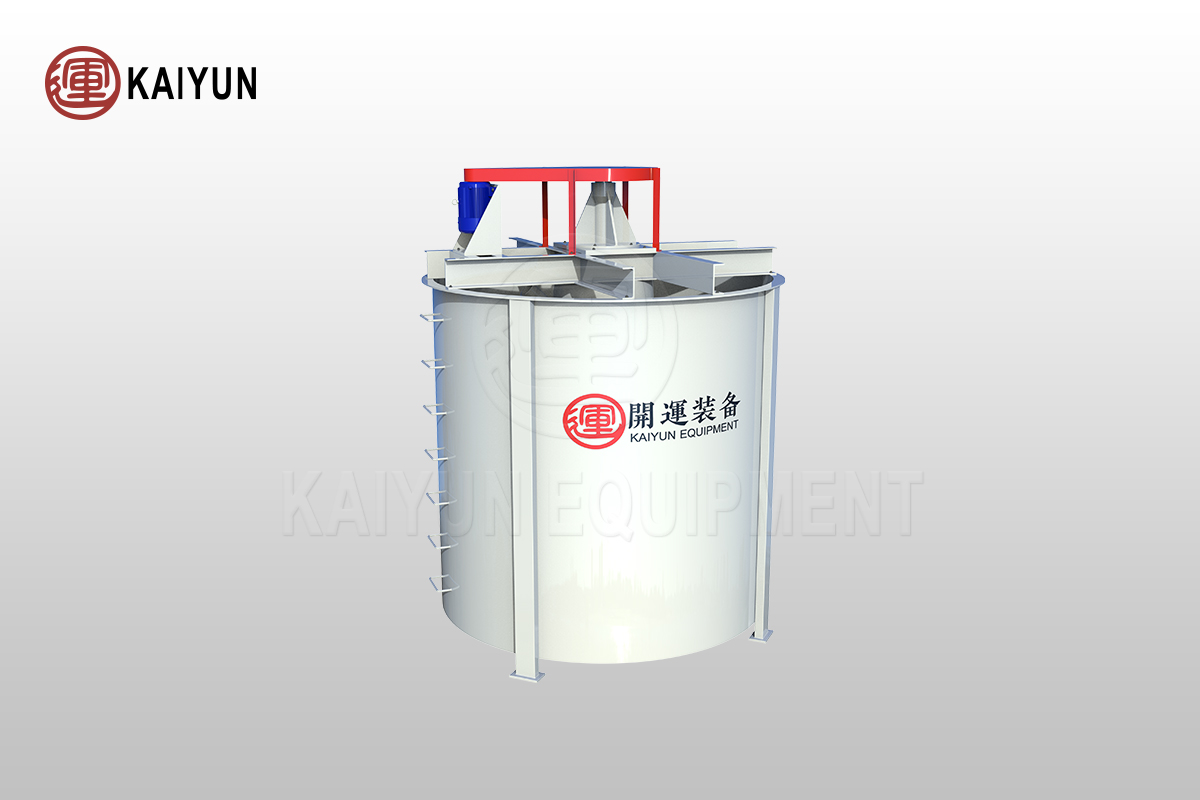Product Overview
The ordinary agitation tank, a traditional gem in the field of slurry mixing, is renowned for its enduring practicality and reliability.
It is widely used for the mixing of slurry and reagents before flotation operations, as well as in various industrial settings such as chemical processing, construction materials, cyanide plants, and wastewater treatment facilities.
Table of Contents
This time-honored mixing equipment, with its streamlined yet efficient design, exemplifies the perfect fusion of classic industrial aesthetics and functional utility.

Advantages and Features
Wear-Resistant and Corrosion-Proof for Lasting Durability
The inner cylinder of the tank is lined with high-wear-resistant rubber, providing exceptional corrosion and wear resistance.
This ensures long-term stable operation even in harsh industrial environments, reducing the need for frequent replacements and maintenance.
Robust Agitation for Superior Performance
The carefully designed impeller ensures thorough mixing of slurry and reagents, delivering strong agitation capabilities. This paves the way for subsequent flotation operations, enhancing the efficiency and quality of the overall process flow.
Stable Operation and Easy Maintenance
The equipment operates smoothly with a design that emphasizes detailed attention to structural integrity. It is easy to maintain and repair, reducing the burden on operators and minimizing downtime, thereby ensuring continuous and efficient production.
Working Principle
The operating principle of the ordinary mixing tank lies in the ingenious collaboration between its impeller and stator. When the impeller rotates, driven by the motor, the slurry is ejected axially from the bottom of the impeller, creating a negative pressure zone within the impeller chamber.
This draws the slurry from above continuously into the chamber, establishing a circulating flow. Simultaneously, the stator acts as a conductor, guiding the slurry to form a smooth vertical circulation flow within the tank – descending at the center and rising around the periphery.
When the upward flow velocity surpasses the natural settling speed of the mineral particles, they remain suspended in the slurry like dancers, maintaining uniform slurry concentration.
This ideal condition enhances the subsequent flotation operations, improving the overall process smoothness and efficiency.
Technical parameters
| Model | Volume (m³) | Impeller speed (r.p.m ) | Impeller diameter (mm) | Motor model | Motor power (kw) | Weight (kg) |
| OAT-500*500 | 0.0785 | 493 | 160 | Y80L-4 | 0.55 | 120 |
| OAT-750*750 | 0.25 | 530 | 240 | Y100L-6 | 1.5 | 240 |
| OAT-1000*1000 | 0.58 | 530 | 310 | Y100L-6 | 1.5 | 680 |
| OAT-1500*1500 | 2.2 | 320 | 400 | Y132S-6 | 5 | 790 |
| OAT-1600*1800 | 2.6 | 331 | 400 | Y132M2-6 | 5.5 | 990 |
| OAT-2000*2000 | 4.4 | 230 | 550 | Y132MM2-6 | 5.5 | 1800 |
| OAT-2000*2500 | 5.9 | 230 | 630 | Y160M-6 | 7.5 | 2106 |
| OAT-2500*2500 | 9.2 | 230 | 630 | Y160M-6 | 7.5 | 2766 |
| OAT-3000*3000 | 14.8 | 210 | 700 | Y225S-8 | 18.5 | 4613 |
| OAT-3500*3500 | 24 | 230 | 850 | Y225M-8 | 22 | 5980 |
| OAT-4000*4000 | 45 | 153 | 1000 | Y250M-8 | 30 | 8910 |